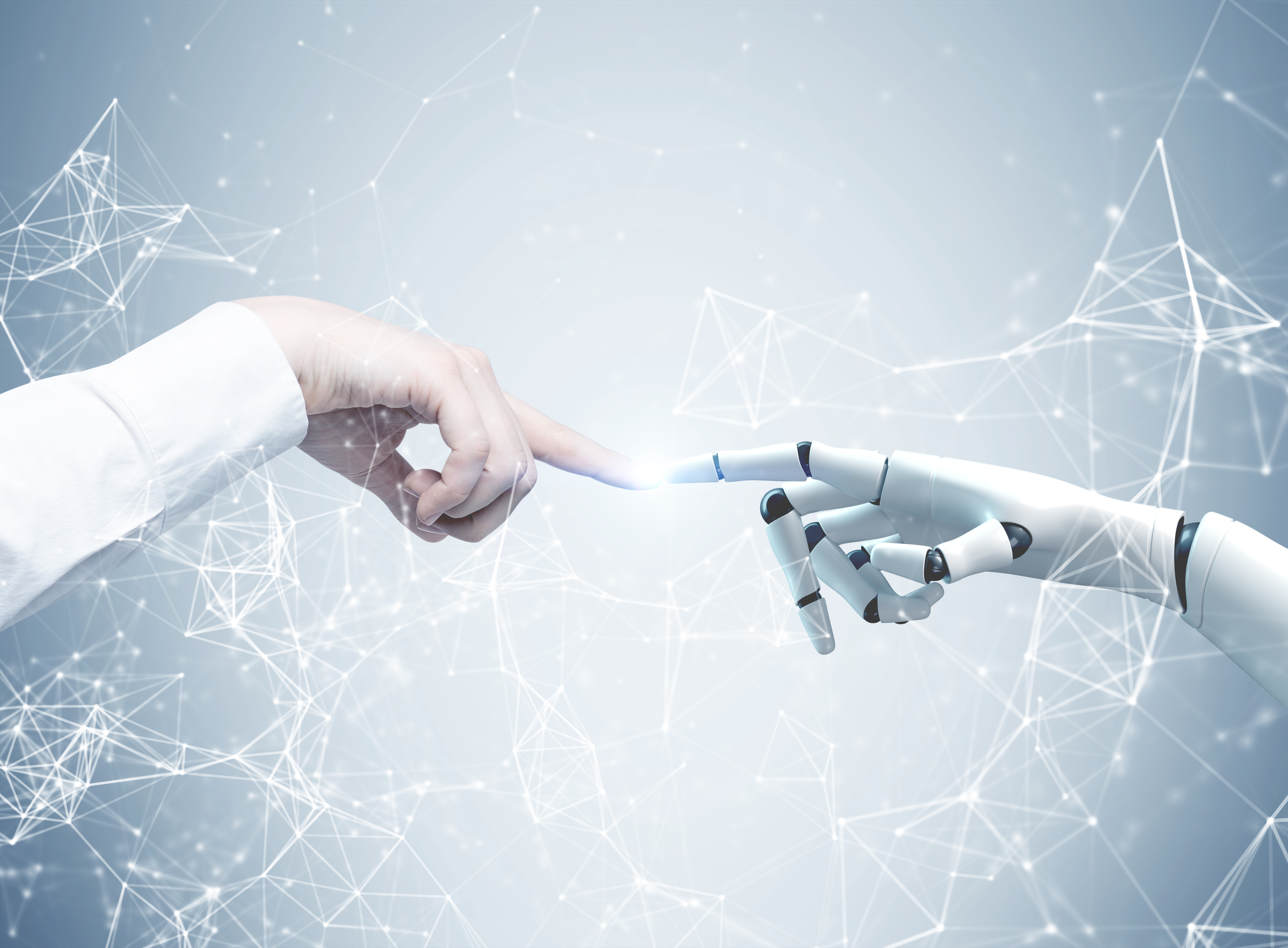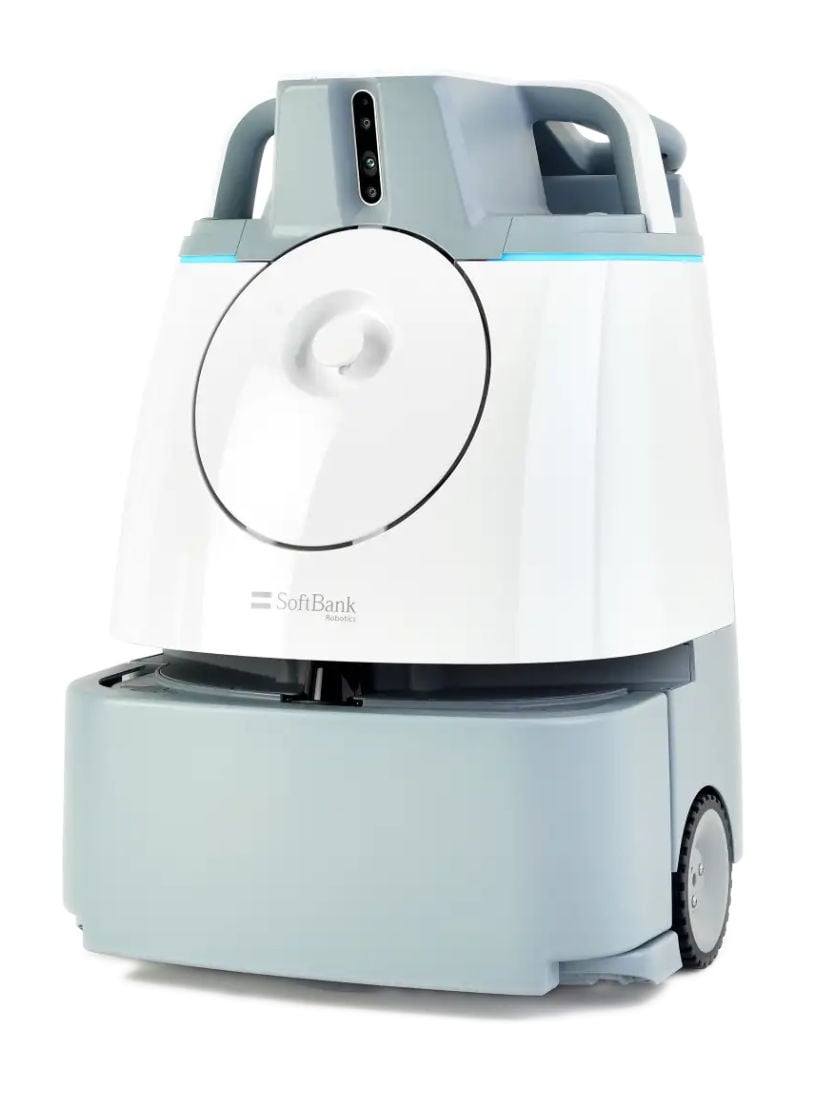What is a Cobot?
“Cobot” is an abbreviation of the term collaborative robot. As the name suggests, cobots collaborate with employees, and they often interact with humans directly without the obtrusive protective enclosures required for traditional industrial robots. Cobots are typically designed to relieve a human worker from a tedious or strenuous task in a shared process (for example, lifting heavy objects into position for a human worker to address). Prevalent cobots today handle tasks like stock review, grocery delivery, vacuuming, and floor scrubbing.
6 Misconceptions about Collaborative Robots
According to Interact Analysis, the market for collaborative robots is growing rapidly, and the annual revenue for cobots is expected to grow to $1.94 billion by 2028. This explosive growth has led to many misconceptions and concerns about the impact of cobots across all industries.
One of the biggest fears is that these robots will ultimately displace human workers. Today, we’re tackling the most common concerns and debunking the myths about collaborative robots that are becoming increasingly present in our day-to-day lives. In addition to addressing the fears about robots taking jobs, we also address common questions about what cobots can and can’t do, whether they’re safe, what types of operations can benefit from them, and more.
1. Myth: Cobots are Replacing Human Workers
Many people fear that cobots will lead to fewer jobs for human workers; however, experts like PA Consulting agree that collaborative robots actually create more jobs and enable human workers to move into better, safer, and more engaging roles. For example, collaborative cleaning robots can take on monotonous, repetitive, or strenuous tasks that are still essential to the health and safety of your space -- like vacuuming -- allowing you and your team to focus on your more nuanced, uniquely human needs. Especially in a pandemic, cobots help people with the daunting tasks involved in reopening and beginning to recoup business and experiential losses.
Companies that deploy cobots can also present the technology as a growth opportunity for employees and job candidates, attracting and retaining talent. It’s important to keep in mind that many jobs can’t be fully automated and will always require a human touch.
2. Myth: Collaborative Robots are Scary
Unlike traditional industrial robots that often have to be fully enclosed to prevent injury, cobots are specifically designed to work right alongside your team and share the same spaces. Cobots are designed with the principles of human-robot interaction, or HRI, guiding all the tiny details that come together to create your user interface and experience. They’re built to be friendly, approachable, and eventually barely noticeable in your day-to-day. That includes its form factor, its movement, its safety mechanisms, its programming - even its personality.
In the New York Times, Jeff Tingley, whose company provides services to offices, described how office occupants would encounter his “friendly machine,” observing the blinker signals when it turns and how it stops when you walk in front of it. “During this fearful period, the folks in buildings have blank looks or even unhappy frowns,” he said. “When the Whiz passes by, it brings a smile to their face. It’s almost like a pet — everybody wants to name it.” 
3. Myth: Cobots are Expensive
Collaborative robots can be expensive, but they don’t have to be. While the costs will depend on the type of robot and the vendor, cobots are universally much less expensive than traditional robots. Cobots often require minimal upfront costs and are inexpensive to deploy and maintain. In addition, the return on investment (ROI) for cobots can usually be realized in just a few months.
Some cobots are also available in a Robot-as-a-Service (RaaS) model that allows users to subscribe for a low monthly fee. Unique financing opportunities and considerations for both opex and capex preferences are cropping up as well.
4. Myth: Automations Only Makes Sense for Large Operations
Organizations and operations of any size can benefit from incorporating collaborative robots into their workflows. Cobots are built to drive productivity and make our jobs easier, and even just one robot can save significant time -- allowing you to focus on what matters most and making your day more human. For example, Whiz, the commercial robot vacuum from SoftBank Robotics provides near real-time data that shows you its exact coverage, frequency, and efficiency as it circulates your space and removes harmful particles, allergens, and other irritants.
Plus, when deploying cobots, it’s easy to test and scale your solution as needed. For example, many smaller-scale cobot users start with just one cobot deployed to a specific task as a proof of concept. Once they realize the time and cost savings that the robots provide, these users can quickly identify additional use cases and add more cobots to help them reach their goals.
5. Myth: Robots Can't Do Nuanced Tasks
True and false. Robots can do many different tasks and produce extremely high-quality results, but not every job can or should be automated. You might say that the Jetsons’ Rosie is truly the biggest robot myth at all.
Robots are ideal for time-consuming, repetitive, large-scale tasks like filtering your carpets and sweeping your floors. A cobot vacuum, like Whiz, can clean floors faster and produce higher quality results compared to manual vacuuming. You can essentially “set it and forget it,” and the robot will repeat these monotonous tasks day after day with the same results every time--with no rushing, skipping, or spot cleaning.
However, more varied tasks like disinfecting, sanitizing, and deep cleaning are still best accomplished with a human touch and attention to detail. As your customers, employees, or guests return to your business, cobots and humans working together can help build trust in the health and safety of your space. For example, seeing both cobots consistently working through their space and people wiping down and servicing areas to CDC guidelines is a welcome, relief-inducing pairing.
6. Myth: Cobots are Difficult to Use
New technologies can be intimidating, especially if you’re implementing automation for the first time. You might be worried that training employees on new technology will require significant time investment before you can gain any of the productivity benefits. This doesn’t have to be the case. Many cobots are incredibly intuitive and require little time for users to get up to speed. For example, Whiz, the commercial robot vacuum from SoftBank Robotics, can be out of the box in a minute and charged and mapped within hours.
Contact us today to learn more about how Whiz can help you achieve your cleaning goals in 2021.







